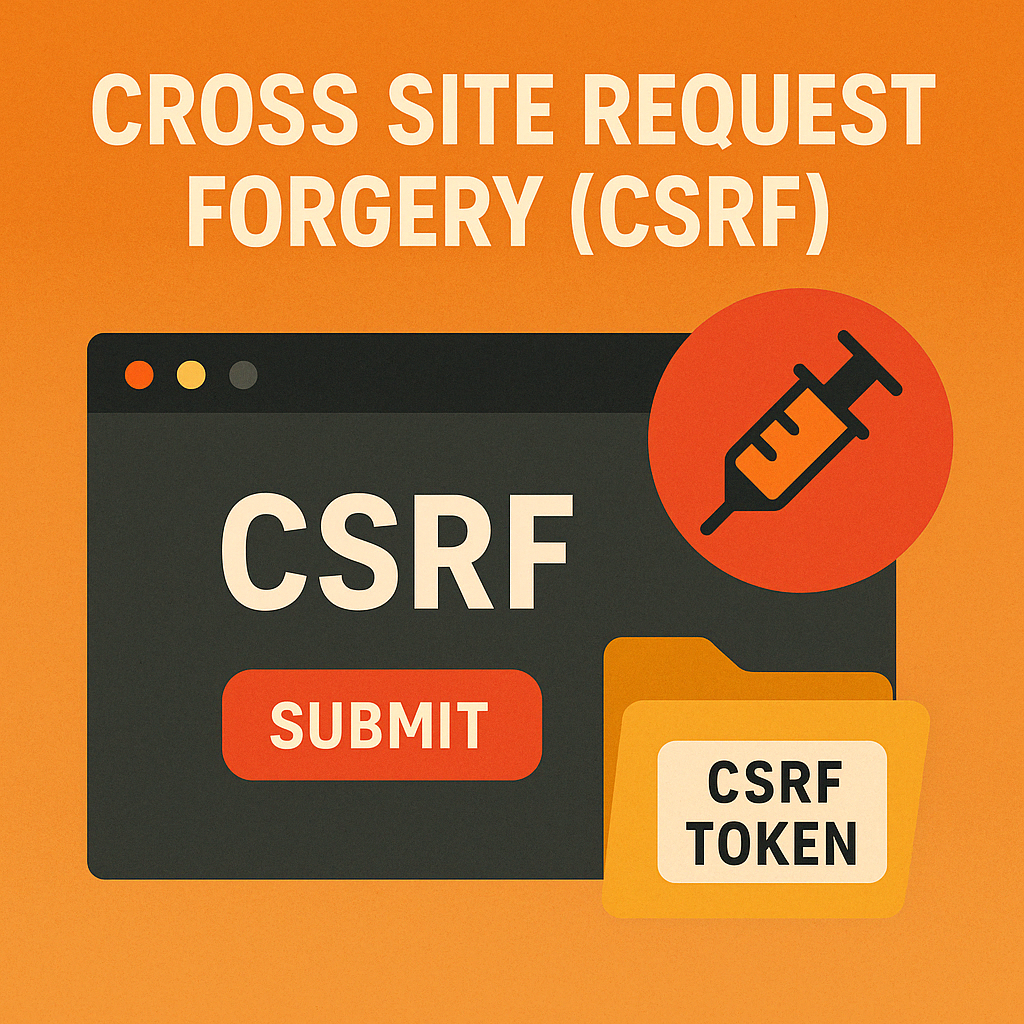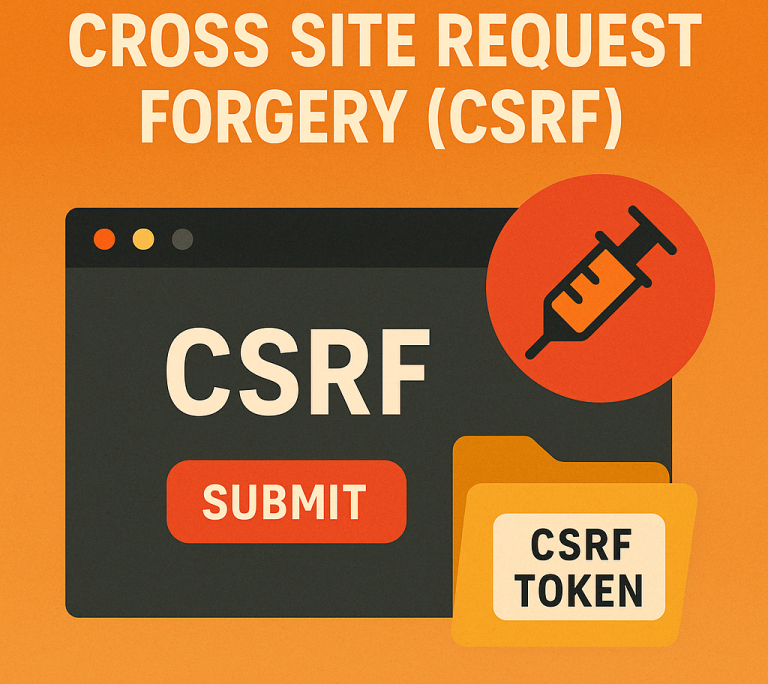CSRF , one of the most critical attack types that comes to mind when it comes to web security , is a significant issue affecting modern web applications. This type of attack, sometimes referred to as Cross -Site Request Forgery (CRF) , allows users to perform actions without their knowledge. An attacker can use a user’s browser to send malicious requests to a previously logged-in website. The user can then unknowingly make bank transfers, change their profile information, or confirm sensitive forms. Therefore, CSRF is not just a software developer’s problem; it’s a risk that directly affects user security.
What is CSRF?
CSRF (Cross-Site Request Forgery) is a type of cyberattack that involves sending unauthorized requests from a website a user has previously logged into and considered trusted, through another site . This attack exploits the user’s browser session information and transmits an action to the web server as if the user had performed the action, when in fact the user had not.
More simply put:
While logged into a platform like banking or social media, a malicious website open in the same browser unknowingly causes a transaction to be made to that site. These transactions could include sensitive transactions like money transfers , password changes , or account deletions .
The most dangerous aspect of CSRF attacks is that transactions are conducted through the user’s legitimate session. This means no suspicious session is created during the attack; the attacker exploits the victim’s existing session . This makes the attack difficult to detect and its consequences much more critical.
How Does CSRF Work?
Cross-Site Request Forgery (CSRF) is a type of cyberattack that exploits active sessions in a user’s browser to perform unauthorized actions on their behalf. These cyberattacks occur when a user unknowingly sends a malicious request to another site. Because the browser automatically sends cookies from a previously logged-in site, the attacker’s crafted request appears to originate from a legitimate user. Thus, CSRF can cause serious consequences for a user account through seemingly innocuous requests.
Browser Requests and Session Management
The basis of a CSRF attack lies in the fact that browsers operate according to request logic. When a user logs into a website, every request sent to that site automatically carries session information (e.g., cookies). By exploiting this very behavior, an attacker can send a request containing CSRF from another site to a site the user is currently logged into . This allows the user to unknowingly perform an authorized action using their session information.
Requests Made Without the User’s Knowledge
A CSRF attack operates entirely in the background. The attacker lures the user with an email, a social media link, or a fake web page. When the user clicks the link or visits the page, a request is sent to another website where the user is logged in, via a form or script hidden in the background. The user is unaware of the initiation of this action. Such attacks can have serious consequences, especially on banking and social media platforms.
Differences Between CSRF and XSS (Cross Site Scripting)
The differences between cross-site scripting and CSRF are often confused. Both types of attacks target the user’s browser, but their methods and objectives differ. In XSS attacks, the attacker injects malicious code directly into the web page. The goal is usually to steal user information or execute malicious code in the browser. CSRF, on the other hand, exploits the user to send malicious requests to the server. In other words, while XSS targets the user, CSRF targets systems and application backends.
What is CSRF Token and What Does It Do?

One of the most effective methods against CSRF attacks is the use of CSRF tokens . These tokens are unique, hard-to-guess, and user-specific tokens generated by the server for each form or request.
These are the keys. The system verifies these tokens to determine whether each incoming request truly belongs to the authorized user. This way, requests from a malicious site are considered invalid. So, what is this CSRF token , how is it configured, and how is it used in applications?
Structure and Usage of CSRF Token
The CSRF token is usually a randomly generated string and is stored in the user’s browser on a session-by-session basis. When a web form is created, this token is placed within the form as a hidden field. When the request reaches the server, both the tokens stored on the server and those sent in the form are compared. If there is a match, the process continues. Thanks to this structure, external requests are automatically rejected because they cannot possibly have the correct xsrf token information.
How to Ensure CSRF Protection?
The CSRF-token mechanism not only generates tokens but also checks them with every incoming request. Especially in session-based applications, the token must be checked during every form submission or AJAX request. If the token is missing or incorrect, the server aborts the transaction. This system acts as a highly effective firewall against threats like CSRF attacks . Frameworks generally provide this structure automatically, but application-specific adjustments may be necessary.
CSRF Token Implementations in Web Applications
Many modern frameworks and CMSs have mandated the use of csrf tokens . For example, platforms like Django, Laravel, and ASP.NET automatically embed the token in every form and authenticate every incoming request with it. Additionally, header-based tokens called xsrf-tokens are also used in REST APIs. These structures ensure secure data flow in both traditional forms and SPA (Single Page Application) architectures.
As PSA Technology , we provide protection against cyber attacks such as CSRF with our IT consultancy .
Precautions That Can Be Taken Against CSRF Attacks
Simply using tokens isn’t enough to protect against CSRF attacks. Modern web applications must protect against such attacks with multiple layers of security. Especially during critical operations where user sessions are active, the system must meticulously analyze every incoming request. CSRF attacks can occur not only through form-based requests but also through background AJAX calls. Therefore, defenses must be multifaceted.
Token Verification and Secure Form Transactions
The first and most basic security method is to generate a unique csrf token for each form or transaction . These tokens should be valid only between the user’s browser and the server. During each form submission or AJAX request, the server checks this xsrf token to determine the legitimate nature of the transaction. Furthermore, limiting the expiration date of tokens and regenerating them for each session enhances information security .
SameSite Cookie Settings and Other Security Layers
The cookie feature offered by browsers SameSiteprovides an additional layer of security against CSRF attacks. Cookies set to SameSite=Strictor SameSite=Laxonly respond to requests originating from the same domain. This prevents malicious requests from third-party sites from reaching the server. Additionally, HTTPS requirements, CORS policies, and the use of CAPTCHAs also strengthen security.
Secure Software Development Practices
Understanding what CSRF means and how such attacks occur is the first step in developing secure software. Software developers should perform token verification in form transactions, restrict all critical operations to the POST method, and verify every user request. Furthermore, actively utilizing and keeping the security frameworks offered by these frameworks up-to-date is crucial. Security is achieved not only by adding tokens, but also by operating with a “secure assumption” in every component of the system.
Frequently Asked Questions
How are browser cookies used during a CSRF attack?
Browsers automatically send cookies when making requests to sites that have already been logged in. This behavior allows the attacker to create a fake request that appears to come from a legitimate user. Therefore, a CSRF attack often occurs without the user being aware of it.
How does CSRF work and how is the request structure used in these attacks?
The answer to the question of how CSRF works is fundamentally based on the HTTP request structure. While the user is logged in, a malicious page sends an automated POST request to the target website. The request is processed within the current session, and the transaction is completed.
How to detect CSRF attack as real user actions?
Cross-site request forgery makes requests to the target server appear as if they were intentional actions taken by the user. Because the session cookie is already valid, the attacker’s crafted request is successfully processed by the server.
What type of user interaction is required for a CSRF attack?
A user typically only needs to click a link, visit a fraudulent form, or open a page containing a malicious iframe to be attacked. Even though the user takes no active action during a CSRF attack , the interaction is considered unintentional.


